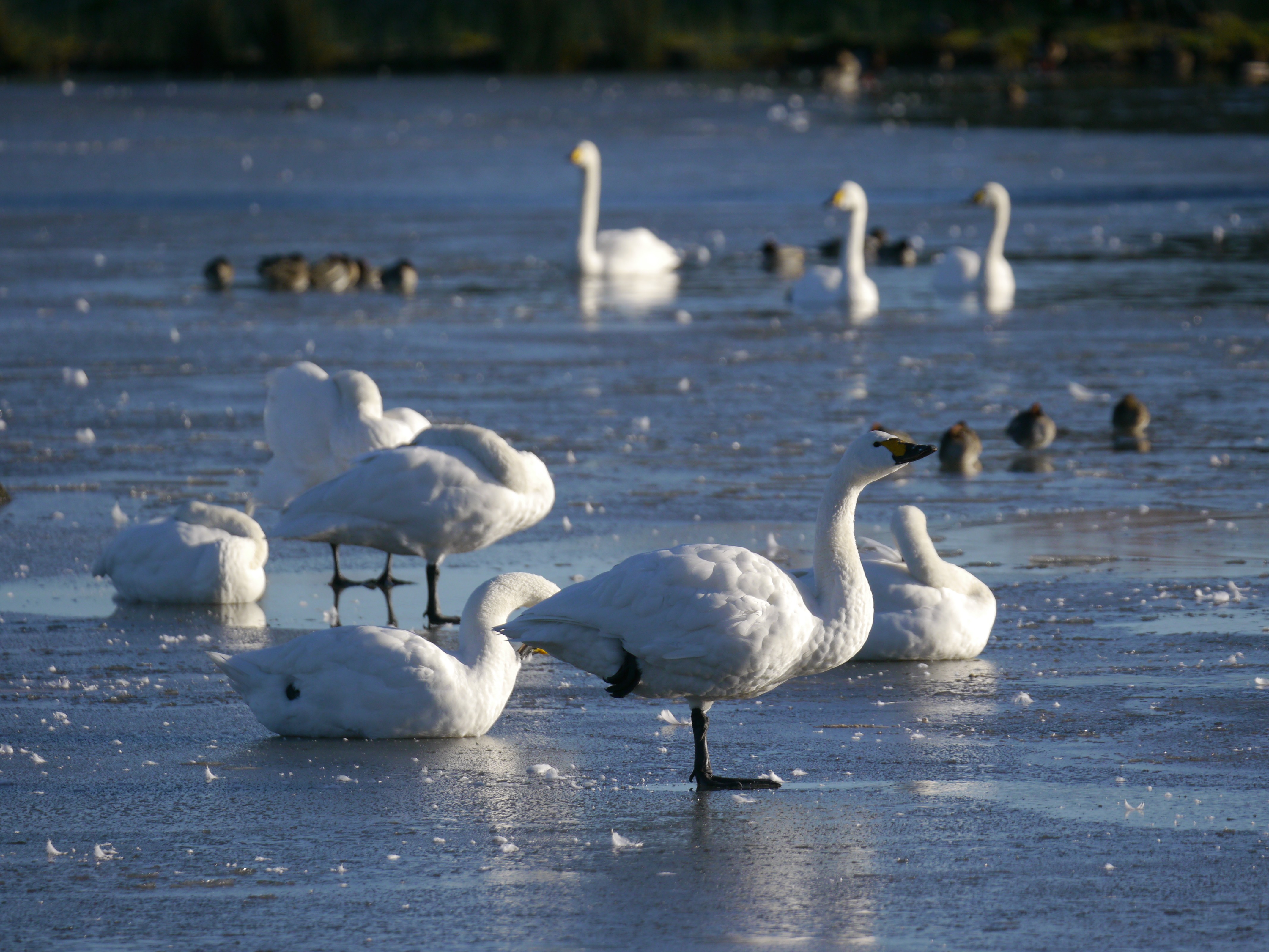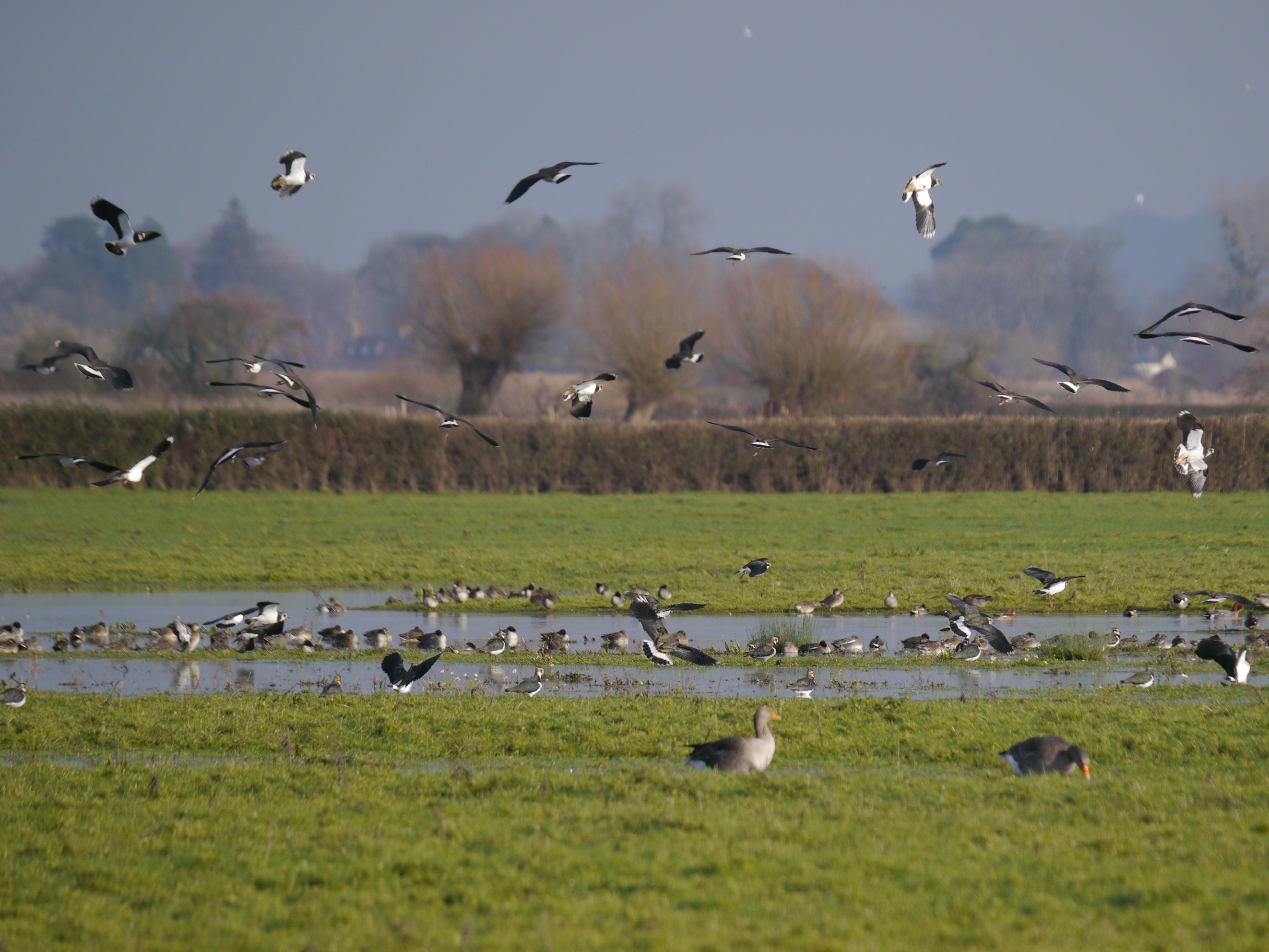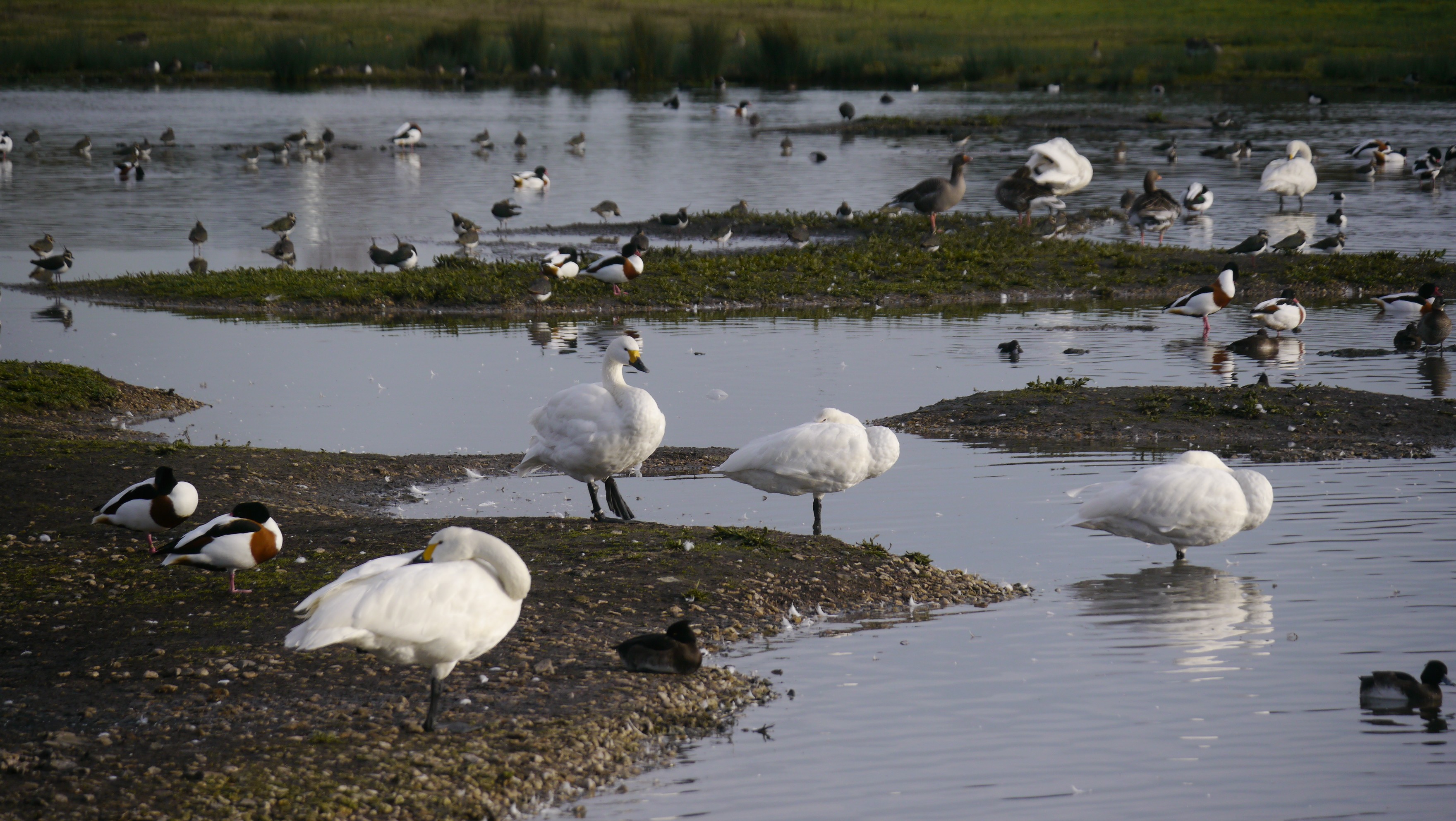Wet, windy and wild
We've had some wet and windy weather this week but spring continues to march forward
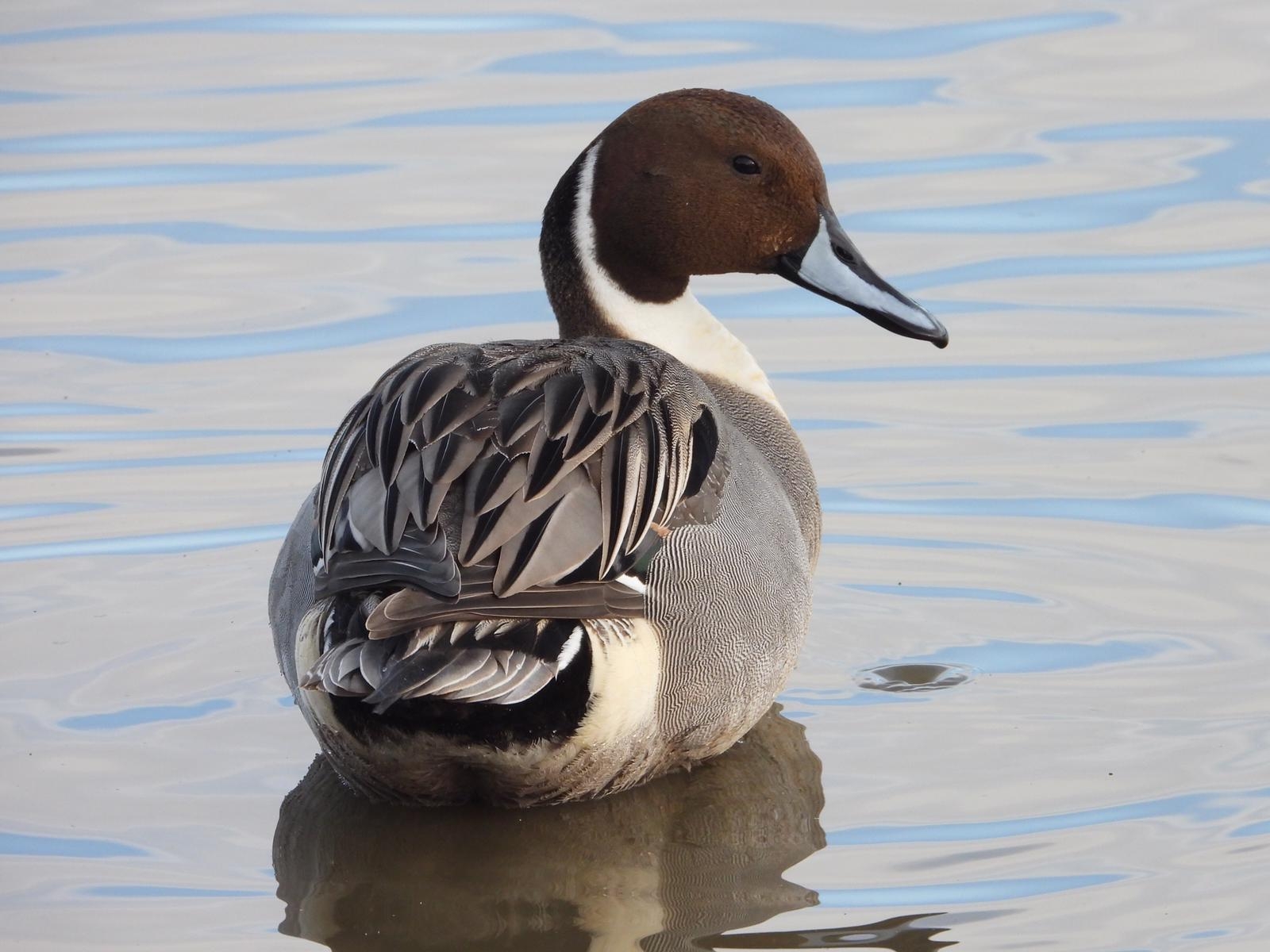
We've had some wet and windy weather this week, but Spring continues to march forward. The windy weather did push some seabirds into the lower estuary and Bristol Channel, but few made it this far up. Seasonal highlights have included our first Sand Martins of the spring, displaying waders getting ready to breed and bumblebees on the wing.
With the winter work drawing the a close, and our hopeful reopening date of 12th April in sight we've shifted our attention to getting the site ready for reopening, and taking the opportunity to make a few upgrades to improve things for our visitors. You can keep up to date with WWT's plans to reopen our sites in England here.
This week the Reserve Team have been focussing on the Estuary Walkway, the path that takes you down towards the Estuary Tower. In recent weeks we've also coppiced the willow from the Withy Bed next to the walkway, and this material is now being used around the reserve to replace willow screens at viewpoints. A portion of the willow has also been donated to All Seasons Forest School in Stroud to create an outdoor learning space for pupils.
We've been pollarding a few of the larger willow trees here as part of their routine management, creating new brash piles that should be perfect for nesting birds in the coming weeks and hibernating insects next winter. The team have also been hard at work, firstly making some improvements to the Willow Hide by creating a new second entrance to reduce the bottleneck and fitting a new roof to keep everyone inside dry. One of the biggest changes you'll notice when we reopen is the concrete wall along the walkway - its gone!
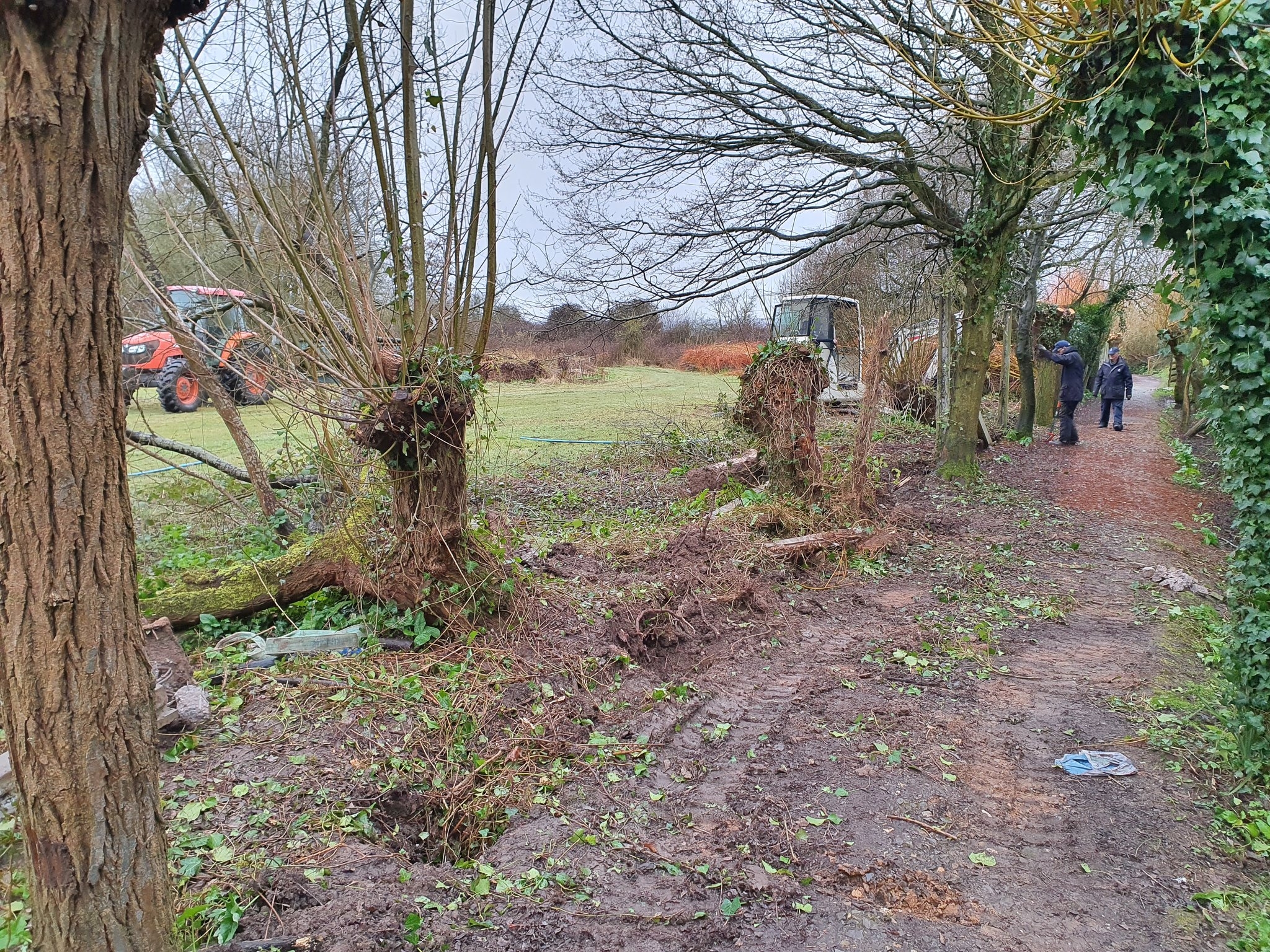
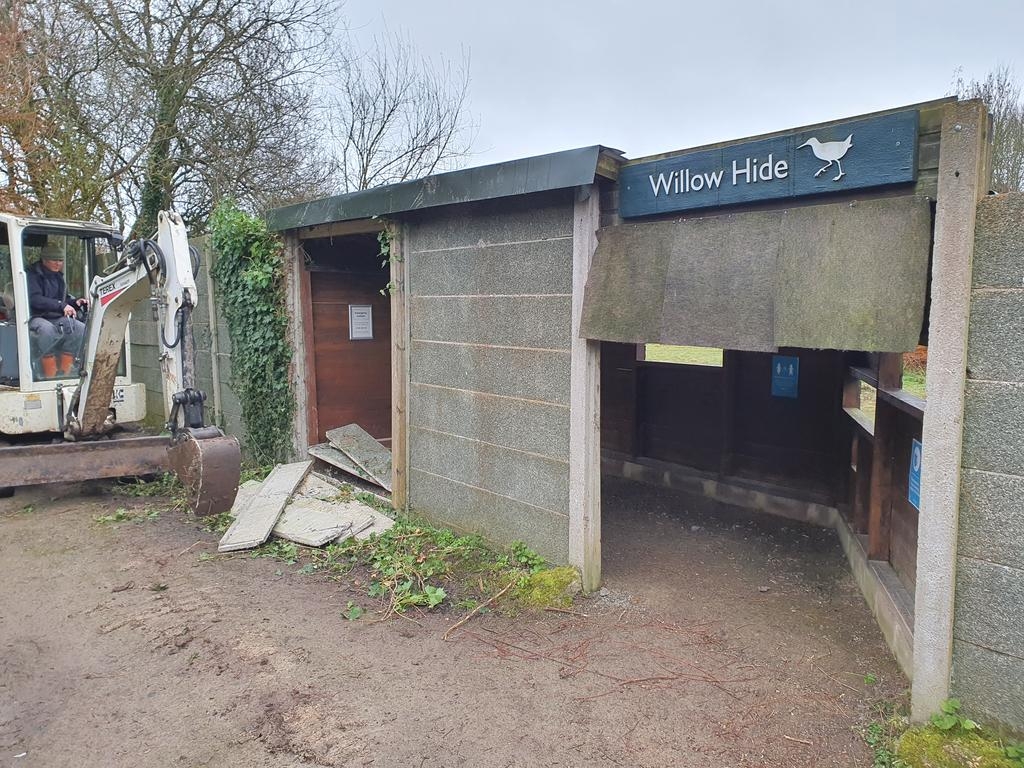
Well, a large section of the wall is now gone to open up views across the Withy Bed out to the Decoy Wood. This should offer great opportunities to look for warblers this spring that breed in the area. The wall was originally put up to screen visitors from the grazing geese that used the area, but as goose number dropped the land was given over to woodland and the Withy Bed coppice. So with no geese to scare, the wall was no longer needed. The concrete panels will be reused around the reserve as foundations to improve access in gateways, or crushed to hardcore that can be used on our paths and other access points.
Work will be continuing along the walkway for a few more days as we upgrade the path surface and give our hides a bit of TLC. We've been able to bring back some additional volunteers this week to help give our hides a much needed lick of paint and help with the other ongoing refurbishment works.
Crane update
Our breeding pairs have been seen throughout the week in their favoured areas, but we've not seen much in the way of dancing displays - the colder weather may have put them off a little. Kia & Chocolo have been around the goose fields and the Tack Piece, Monty & Evie have been in the roadside fields along with Ruby and her unringed partner. The latter pair have also been in the South Lake where they usually nest.
We'll keep you updated with the latest news as the breeding season unfolds!
Wildfowl
Duck numbers are dropping as birds depart for breeding grounds. Perhaps most notable are Pochard, with nearly all birds now gone. Today (Friday 12th March) found just eight birds on the main area of the reserve. Around 120 Pintail are still with us, and we like to appreciate them for as long as possible - just check out the great cover photo above taken by our volunteer Lise. The carpets of Wigeon are also shrinking, perhaps better now called rugs. Around 600 birds are left on the reserve. We may have also seen a small departure of our White-fronted Geese, with the flock seeming to have dropped to around 140 birds, down from a peak of 170 a few weeks ago. They are moving around the reserve a lot more, but still favouring the Four Score field in the south, but spending time in the Tack Piece and out on the estuary. It won't be long before they all depart.
Elsewhere up to four Goldeneye have been seen - two males, a female and a first-winter plumaged male. They have mainly been associating with the captive flock or on the South Lake. The Cackling Goose remains with the dwindling Canada Goose flock on the Dumbles, whilst numbers of Barnacle Geese have remained stable at around 200 birds.
Waders
Flocks of waders have also dropped dramatically over the last few weeks, especially for our Golden Plover. The last few birds are still lingering, dropping from around 100 at the start of the week to just 34 this morning (Friday 12th). Lapwing are another species here in big numbers in the winter, but as the breeding season arrives most birds move off leaving us with around 30 pairs on the reserve. This week we've seen the first displaying males tumbling around over the Top New Piece and Dumbles, and some nest scraping as pairs look to choose the best spot to lay.
A single Knot was with the Black-tailed Godwit flock on Thursday 11th, roosting on the South Lake. The flock of godwits are slowly creeping up in number with around 120 counted today. Some of the birds are now colouring up nicely, moulting through their brick-red breeding plumage as they prepare to depart for Iceland. A few hundred Dunlin remain and the Little Stint was seen again with them today. The flock of Ruff have pretty much all gone, just a single bird was seen on Wednesday, and around a dozen Redshank are also present. Meanwhile the Avocet flock has increased up to 48 birds, and our Oystercatchers are also present on their breeding territories. Wintering Curlew are also departing the estuary, but a pair are frequently seen on the Top New Piece and may be our breeding pair from previous years. We've seen the male displaying too so fingers crossed they have another successful year.
Other notable species
Perhaps the biggest news since our last update was the discovery of a Bonaparte's Gull on the South Lake. Martin found this North American species amongst the Black-headed Gull flock whilst making some end-of-the-day site checks before heading home. The bird soon departed and flew towards the estuary, presumably roosting here with the thousands of other gulls. Sadly it was not seen again.
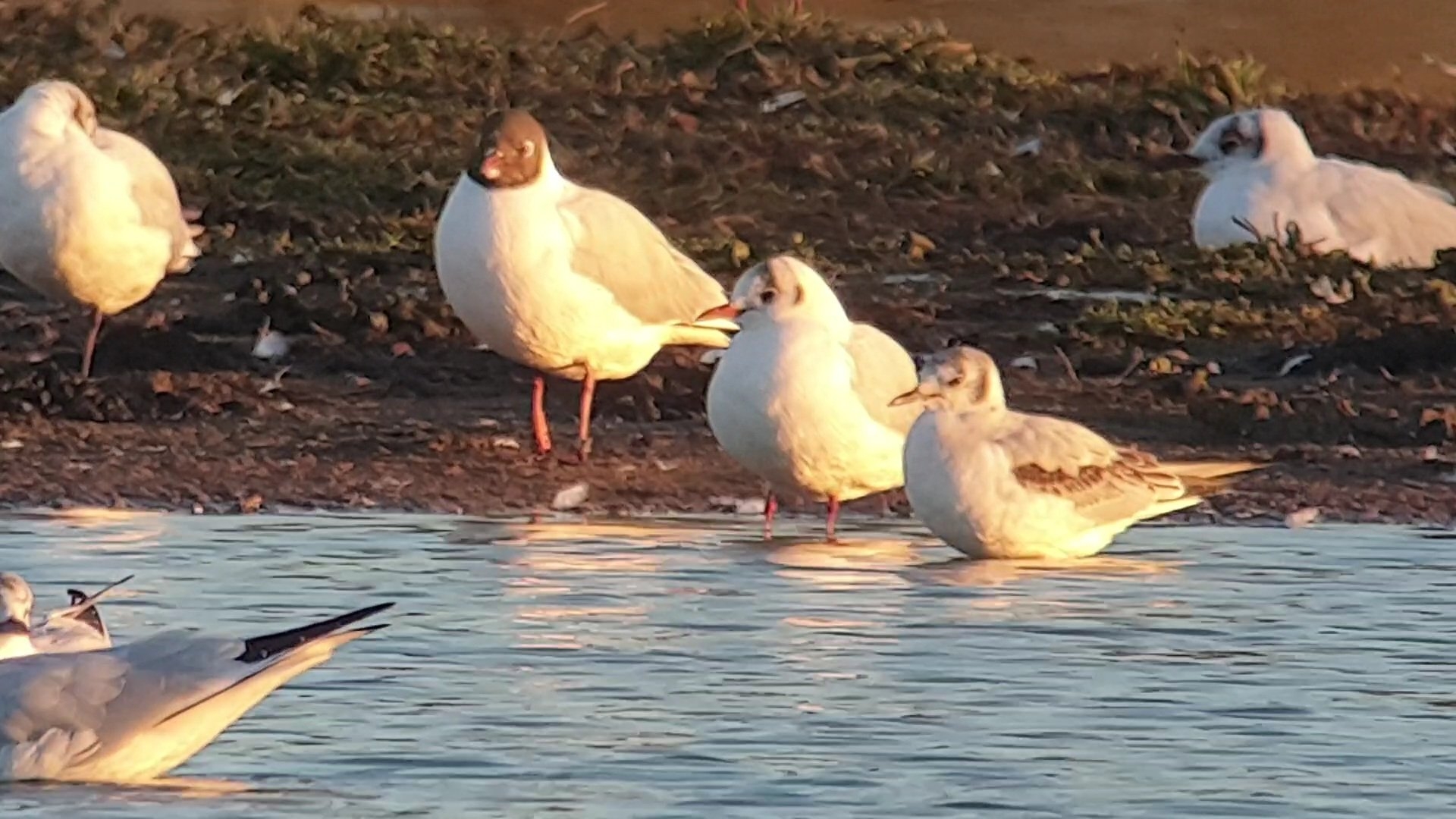
Other gull sightings this week have included several Common Gull sheltering on the ponds and lakes, trying to keep out of the wind. And today (Friday 12th) an adult summer-plumaged Mediteranean Gull was seen.
A few more Chiffchaff have begun singing around the reserve this week, along with Cetti's Warbler and Reed Bunting, but we're still waiting for our first Blackcap. Our first Sand Martins passed over the Tack Piece on Wednesday - the two birds then headed north over the Rushy.
Birds of prey have been seen throughout the week including a Peregrine mobbing a Marsh Harrier on Wednesday, a Merlin hunting the Top New Piece on Thursday, briefly stopping to sit on a fence post, along with a few Buzzard. Our Cattle Egrets continue to roost on the South Lake, and we've seen at least one Great Egret return to the reserve after being pushed off by the cold weather. Extra excitment last week were a pair of Spoonbill that spend time on the reserve and in some of the local wetland areas nearby.
Our Kingfisher pair at the Kingfisher Hide had been very quiet at the start of the month, but have now sprung into action with the male busy cleaning out one of the old holes as the female sits outside offering some encouragement. We hope they have another successful season, along with our second pair near the South Lake. Down at the Kingfisher Hide, the Little Grebe has resumed its feeding relationship with a pair of Gadwall, with the ducks following the grebe around the pond presumably to pick off any food disturbed as the grebe dives down in search of its own meal, with the duck possibly offering a few extra pairs of eyes to look out for predators whilst the grebe is distracted underwater?
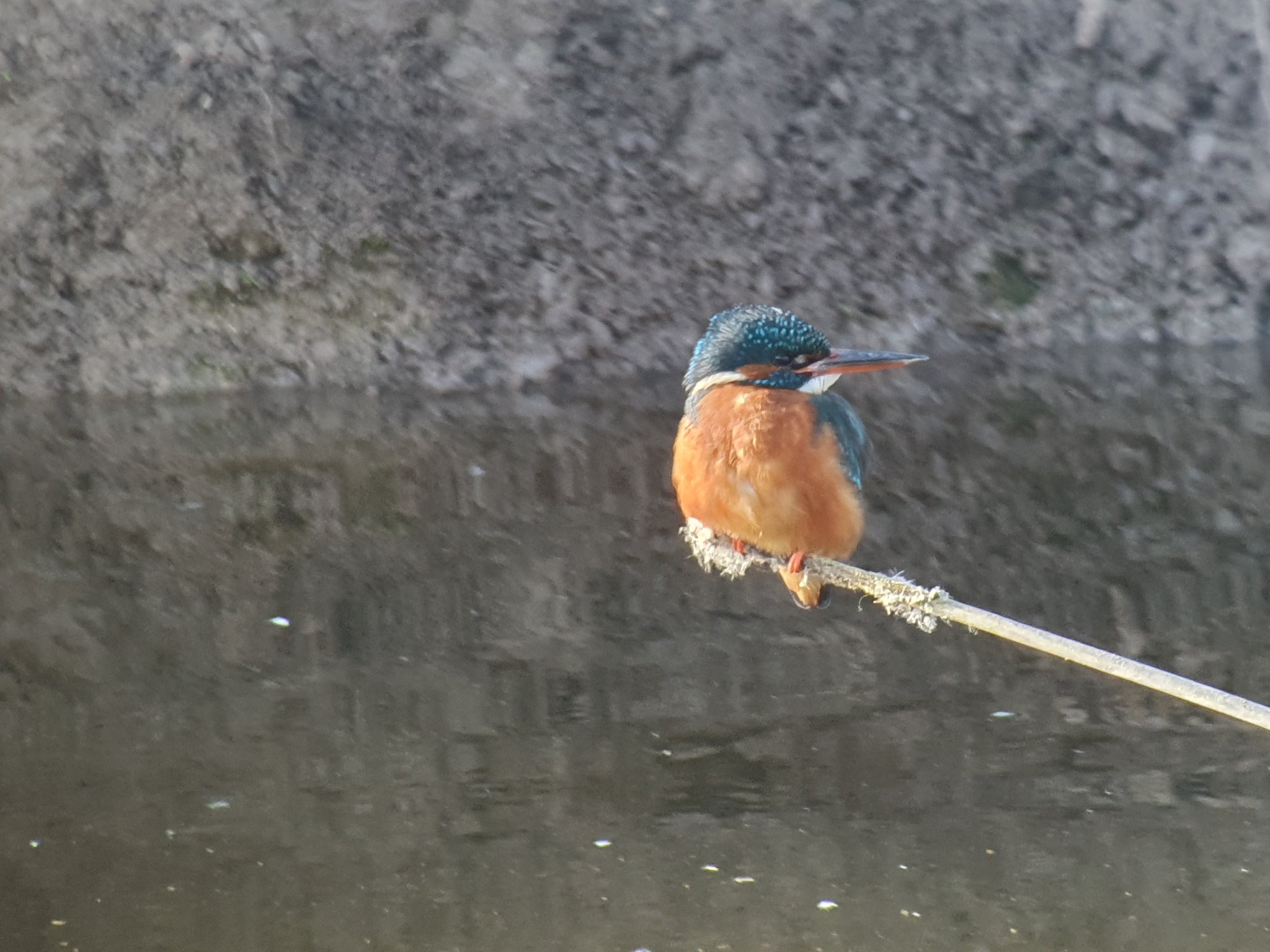
The windy weather pushed a large number of Gannet and Kittiwake into the estuary this week, with over 300 Gannet seen off Severn Beach south of the M4 bridge. Sadly very few of these birds make it past the bridges and further up the estuary, but a single Gannet was seen nearby over Sharpness, and a flock of Kittiwake passed through too.

